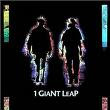A Robert Earl Keen, Jr. Sense of Irony

By Douglas McDaniel
It goes this way: When a boy becomes a man in his twenties, he’s really just becoming a happier boy. In his thirties, certain once inert chemicals disperse in his brain causing him to wonder where that happy boy went. Then, in his forties, when the result of those energies are unleashed, when he’s finally determined that life is nothing but a bitch; when he’s reflecting on that all: Well then, he’s ready to become a regular Robert Earl Keen, Jr.
The Kerrville, Texas-based singer/songwriter’s productive cycle appears to be in that period when all of the trouble is finally being appreciated and the man finally settles down to a kind of childlike contentment, too.
For example, this fall, a new release will arrive that exemplifies his standing in the music community at the age of 52. In January, numerous artists converged at the MusicFest at Steamboat Springs to honor Keen, performing interpretations of Keen’s influential material at the popular festival’s annual Tribute to a Legend gala. The recording, “Live Is Good,” is slated for release by Right Avenue Records. In addition to performances by the full electric band backing Keen, it includes acoustic tribute performances by Cody Canada, Cory Morrow, Chris Knight, Jason Boland, Stoney LaRue, Bonnie Bishop, Reckless Kelly, Wade Bowen, Max Stalling, Micky, Gary, and Muzzie Braun, Walt Wilkins, Randy Rogers, Roger Creager, Matt Powell, Brandon Rhyder, Dub Miller, Doug Moreland, Matt Skinner, Kathleen Braun, Josh Grider, Darren Kozelsky, and Rich O’Toole.
But at the base of a curve of his mid-period career, in 1997, he made a small hit out of the song, “Over the Waterfall,” helping (with Lyle Lovett, Nancy Griffith and Ryan Adams, who was with Whiskeytown at the time) to practically invent a style of alt-country for the radio dial, with a line that goes: “The beauty of sadness is feeling the pain.” At that point Keen had gained ground in the creative sphere because of the sadness he found in his late thirties, early forties, with a song that began with the lines:
I slipped through your fingers
into the clouds
Ran down the concrete hallways
Pushed through the crowds.
I watched by the water
Reached for the sun
Why did I bother
What's done is done
Then, the chorus:
And all that's left of me now
Is waiting to drown
Over the waterfall (falling down)
Now, there’s a mandolin solo pushing “Waterfall” along to it’s over-the-edge apogee of intended sorrow.
Because that riff, and those lines, reveal Keen in a nutshell: Finding the beauty in the pain revealed by a singer/songwriter who, at his best, has a penchant for serving up his lyricism on a very tough hook. Rendered almost journalistically deadpan. As just a passing observation.
Indeed, a major exegesis could be written about that Keen standard, recorded at the age of 34, “The Road Goes on Forever and the Party Never Ends,” in which we find the protagonist, a waitress, Sherry, who gets the guy, Sonny, to drive her to Florida. The man finds the trouble, sure, but the woman ends up with all of the money, and her boyfriend goes to jail for a crime he, apparently, did not commit. Clearly, in this case, Keen’s English and journalism courses at Texas A&M were time well spent.
Cast within its small town savvy and strength of storytelling, its characters fully evolve into fully traveling denizens of the road. In terms of its hook about the party never ending, on all sides giving it new meaning each time the chorus is sung, ending the story with a Keen sense of irony, he is saying something else entirely.
Yes, a good part of his best creative period was spent likely musing on the most heartbreaking truths. There’s a dark sarcasm at work in “Party Never Ends.” Must be why he’s so tight with the college crowd staring into the abyss of the futureworld.
A decade ago, around age of 42, a little after the album “Picnic” was opening the door for his best work of those years to be recognized, he told Rolling Stone magazine, “I fight being jaded all the time. I love music -- all of my best memories have to do with musical experiences. But at the same time, I see people say things that they're going to do with their career, or hear them say they're going to tell people that it's going to be this way, and I want to just jump out and say, 'Don't do that! You're cutting your own throat! They're not going to listen to you, you're not going to change the world, you've got to work with it.' And that's where you get jaded -- you find out you don't change the world, you have to work within the world that you're walking in.”
Just trying to get a grip on Robert Earl Keen’s musical output here. And it often points to a sense of loss, and thus, rebirth. Because the road doesn’t go on forever. The party does end, and sure, that’s the beauty of feeling the pain. But an over-50s folk hero really is something to be.
###
Labels: alt-country, Austin music scene, world music



